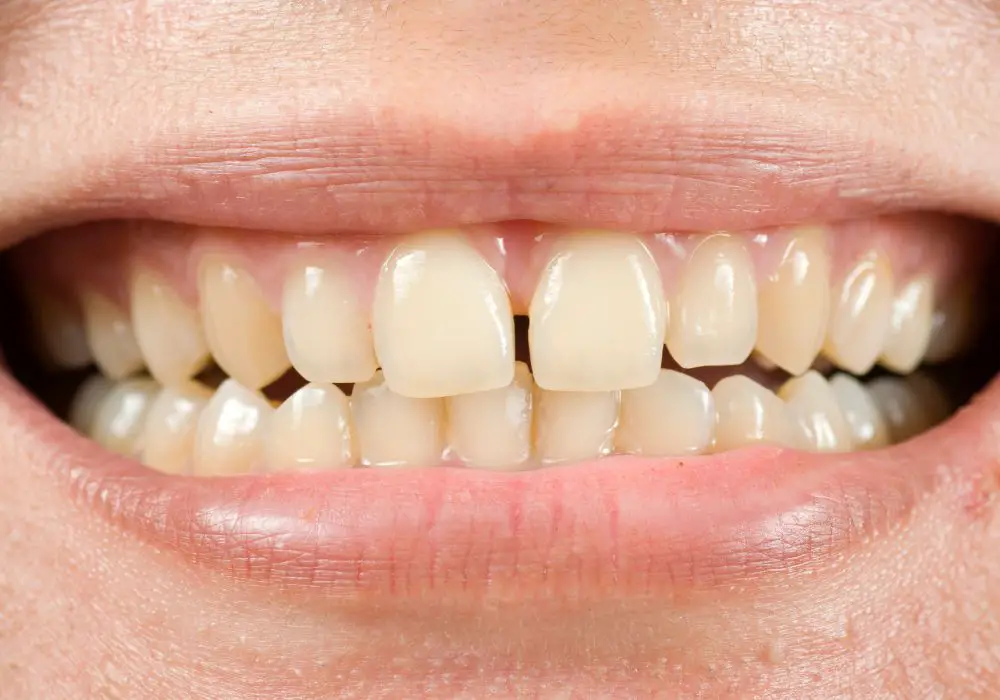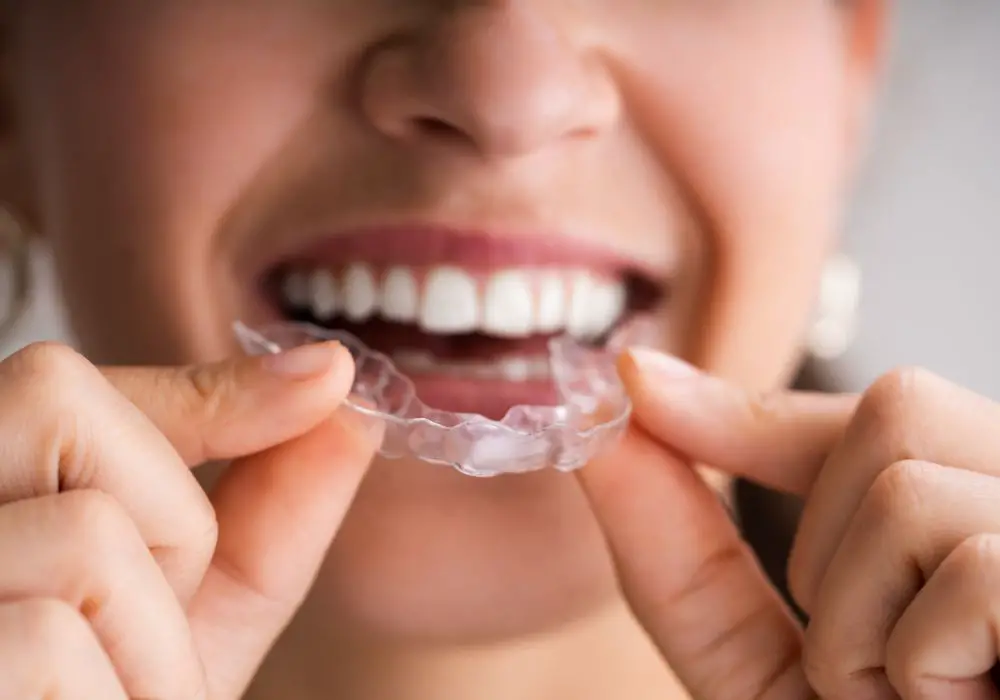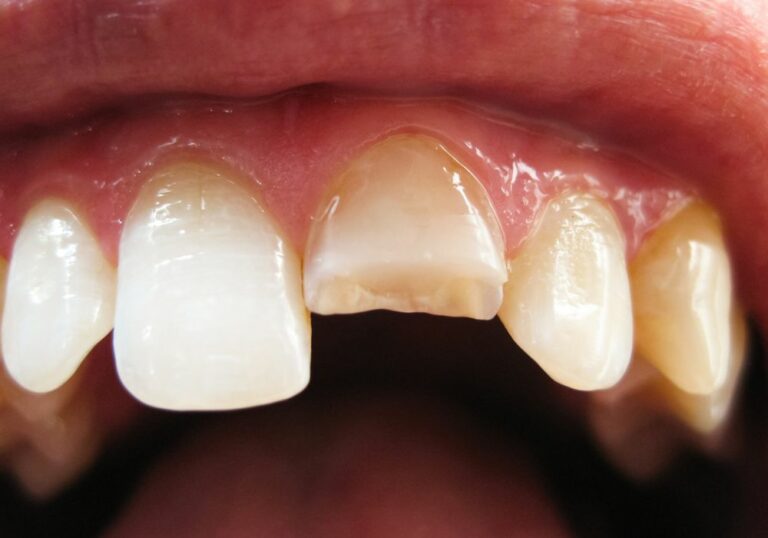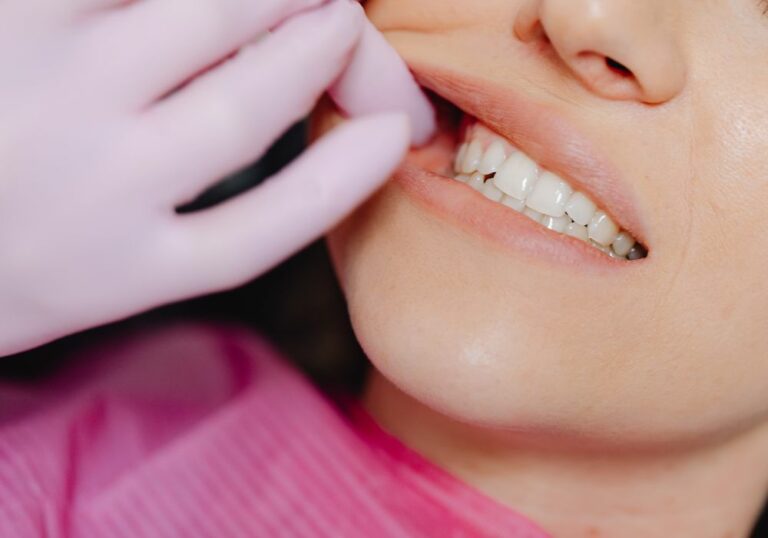Are you considering using Invisalign to straighten your teeth? While Invisalign is a popular and effective option for orthodontic treatment, you may be wondering if your teeth can move too fast with this method. The short answer is yes, your teeth can move too fast with Invisalign, which can cause damage to your teeth and gums.
Invisalign works by using a series of clear, removable aligners to gradually shift your teeth into the desired position. Each set of aligners is worn for about two weeks before being replaced with the next set in the series. While it may be tempting to try to speed up the process by switching to a new set of aligners sooner, doing so can be harmful to your teeth. Moving your teeth too quickly can cause root resorption, which is the shortening of the tooth roots, and can lead to tooth loss in severe cases.
It’s important to follow your orthodontist’s instructions and wear each set of aligners for the recommended amount of time. While some people may see results in as little as a few weeks, others may require several months or even up to a year to achieve their desired results. Remember, the goal of Invisalign treatment is to safely and effectively straighten your teeth, not to rush the process and risk causing damage.
Understanding Invisalign
If you are looking for a discreet and comfortable way to straighten your teeth, Invisalign might be the solution you need. Invisalign is a popular orthodontic treatment that uses clear aligners to move your teeth into the desired position gradually.
Each set of aligners is custom-made to fit your teeth and is designed to shift them slightly over time. The aligners are made of a smooth, comfortable plastic material that won’t irritate your gums or cheeks.
Invisalign aligners work by applying gentle pressure to your teeth, which gradually moves them into the desired position. The amount of pressure applied to your teeth is carefully controlled to ensure that your teeth move at the right speed and in the right direction.
It is essential to wear your aligners for the recommended time each day to ensure that your teeth move at the right speed. Typically, you will need to wear your aligners for 20-22 hours each day, removing them only when you eat or brush your teeth.
It is also crucial to follow your dentist’s instructions when it comes to changing your aligners. Each set of aligners is designed to move your teeth a specific amount, and you need to wear each set for the recommended time before moving on to the next set.
Overall, Invisalign is an excellent option for people who want to straighten their teeth discreetly and comfortably. With proper use, you can achieve the desired results without any discomfort or inconvenience.
How Invisalign Works
Invisalign is a popular orthodontic treatment that uses clear plastic aligners to straighten teeth. The aligners are custom-made for each patient and are designed to gradually shift the teeth into the desired position. Here’s how Invisalign works:
- Consultation: The first step in the Invisalign process is a consultation with an orthodontist or dentist who is trained in Invisalign. During the consultation, the dentist will examine your teeth and determine if Invisalign is the right treatment for you.
- Treatment Plan: If Invisalign is the right treatment for you, the dentist will create a treatment plan that outlines the movements your teeth will make during the treatment. The dentist will also take impressions of your teeth, which will be used to create your custom aligners.
- Aligner Fitting: Once your aligners are ready, you’ll return to the dentist’s office to have them fitted. The dentist will check to make sure the aligners fit properly and will give you instructions on how to care for them.
- Wearing the Aligners: You’ll wear each set of aligners for about two weeks, removing them only to eat, drink, brush, and floss. As you progress through the treatment, you’ll switch to a new set of aligners every two weeks. Each set of aligners is designed to move your teeth slightly closer to the desired position.
- Follow-up Appointments: Throughout the treatment, you’ll have follow-up appointments with your dentist to check on your progress and to receive your next set of aligners.
Invisalign works by applying gentle pressure to your teeth, gradually moving them into the desired position. The aligners are designed to shift your teeth in different directions and even rotate them, exerting the right amount of pressure in the right places. Each aligner is designed to move your teeth by about 1/10 mm.
It’s important to follow your dentist’s instructions and wear your aligners for the recommended amount of time. While it may be tempting to try to speed up the process by wearing your aligners for longer periods of time or by switching to a new set of aligners too quickly, doing so can cause damage to your teeth and gums.
Speed of Teeth Movement with Invisalign

Invisalign is an orthodontic treatment that uses clear aligners to straighten teeth. It is a popular alternative to traditional braces because it is virtually invisible and more comfortable to wear. One of the most common questions people have about Invisalign is how quickly their teeth will move.
Each set of Invisalign aligners is designed to gradually shift your teeth into the desired position. The speed of teeth movement with Invisalign can vary depending on a few factors. These factors include:
- The complexity of your case: Simple cases may require less correction and therefore be completed in a shorter amount of time, while more complex cases may take longer.
- Your commitment to the process: Consistently wearing your aligners for the recommended amount of time each day is crucial to achieving the desired results. Failure to do so may slow down the process.
- The use of acceleration devices: Using an acceleration device like AcceleDent can help speed up the teeth movement process by making your teeth move more efficiently.
On average, Invisalign treatment takes about 12 to 18 months to complete. However, some people may see results in as little as three months, while others may require up to two years of treatment. It is important to note that every case is unique, and the speed of teeth movement with Invisalign will depend on your individual circumstances.
It is also important to follow your orthodontist’s instructions carefully to ensure the best possible outcome. This includes wearing your aligners for the recommended amount of time each day, changing to new aligners as directed, and attending all scheduled appointments. By doing so, you can help ensure that your teeth move at a safe and steady pace, without the risk of moving too fast or causing damage to your teeth or gums.
Potential Risks of Rapid Teeth Movement
When it comes to Invisalign treatment, rapid teeth movement can be a tempting prospect. However, it is important to keep in mind that there are potential risks associated with this approach. Here are some of the risks:
Gum Damage
Rapid teeth movement can put excessive pressure on your gums, which can cause damage. This can result in gum recession, which can lead to tooth sensitivity and even tooth loss. It is important to work with your orthodontist to ensure that your teeth are moving at a safe and healthy pace.
Tooth Loss
If your teeth are moving too quickly, it can lead to tooth loss. This is because the roots of your teeth need time to adjust to their new positions. If they are moved too quickly, they may not be able to adjust properly, which can result in tooth loss.
Bone Damage
Rapid teeth movement can also cause damage to the bones that support your teeth. This can result in bone loss, which can lead to tooth loss and other dental problems. It is important to work with your orthodontist to ensure that your teeth are moving at a safe and healthy pace.
In conclusion, while rapid teeth movement may seem like an attractive option, it is important to consider the potential risks. By working with your orthodontist and ensuring that your teeth are moving at a safe and healthy pace, you can achieve the results you desire without putting your dental health at risk.
How to Prevent Rapid Teeth Movement

To avoid rapid teeth movement with Invisalign, it is important to follow your orthodontist’s instructions carefully. Here are some tips to help you prevent your teeth from moving too quickly:
- Wear your aligners for the recommended amount of time each day. Typically, this is around 22 hours per day. If you don’t wear your aligners for the recommended amount of time, your teeth may move too quickly, which can cause discomfort and other issues.
- Change your aligners on schedule. Invisalign aligners are designed to be changed every one to two weeks, depending on your orthodontist’s instructions. If you change your aligners too quickly, your teeth may move too rapidly, which can cause discomfort and other issues.
- Avoid eating or drinking anything other than water while wearing your aligners. Food particles can get trapped between your teeth and your aligners, which can cause your teeth to move too quickly.
- Brush and floss your teeth regularly. Good oral hygiene is important during Invisalign treatment, as it can help prevent tooth decay and other issues that can cause your teeth to move too quickly.
- Wear your retainers as directed. After your Invisalign treatment is complete, you will need to wear a retainer to prevent your teeth from moving back to their original positions. It is important to wear your retainer as directed by your orthodontist to prevent rapid teeth movement.
By following these tips, you can help prevent rapid teeth movement and ensure that your Invisalign treatment is as effective as possible. Remember to always follow your orthodontist’s instructions and ask any questions you may have about your treatment.
Professional Monitoring and Adjustments
When you start Invisalign treatment, your orthodontist will create a customized plan for you, including a series of aligners that you will wear for a certain period of time. Your orthodontist will also schedule regular appointments to monitor your progress and make any necessary adjustments to your treatment plan.
During these appointments, your orthodontist will check the fit of your aligners and make sure that your teeth are moving as planned. If necessary, they may make adjustments to your treatment plan, such as ordering new aligners or changing the length of time you wear each set.
It’s important to follow your orthodontist’s instructions and attend all of your scheduled appointments. Your orthodontist has the training and expertise to ensure that your treatment is progressing safely and effectively. Skipping appointments or making adjustments to your treatment plan without consulting your orthodontist can lead to complications or even damage to your teeth.
In addition to monitoring your progress, your orthodontist can also provide guidance on how to care for your aligners and maintain good oral hygiene during treatment. They can recommend cleaning products and techniques to help keep your aligners and teeth clean and healthy.
By working closely with your orthodontist and following their instructions, you can ensure that your Invisalign treatment is safe, effective, and delivers the best possible results.
Importance of Following Dentist’s Instructions
When it comes to Invisalign treatment, it is essential to follow your dentist’s instructions carefully. Your dentist will provide you with a series of clear aligners that are designed to move your teeth gradually. Each aligner is custom-made to fit your teeth and should be worn for 20-22 hours a day, only taken out for eating, drinking, brushing, and flossing.
Your dentist will give you specific instructions on how to wear and care for your aligners. It is vital to follow these instructions to ensure that your treatment progresses as planned. Failure to follow your dentist’s instructions can lead to complications, such as teeth moving too quickly or not moving enough.
One of the most important instructions your dentist will give you is to wear your aligners for the recommended amount of time each day. If you do not wear your aligners for the recommended time, your teeth may not move as planned, and your treatment may take longer than expected.
Your dentist may also provide you with specific instructions on how to clean your aligners. It is essential to clean your aligners regularly to prevent bacteria buildup and ensure that they remain clear and discreet. Your dentist may recommend using a soft-bristled toothbrush and a mild soap to clean your aligners.
In addition to following your dentist’s instructions, it is also essential to attend all scheduled appointments. Your dentist will monitor your progress and make any necessary adjustments to your treatment plan. Skipping appointments can delay your treatment and lead to complications.
In summary, following your dentist’s instructions is crucial for a successful Invisalign treatment. Wear your aligners for the recommended amount of time each day, clean them regularly, and attend all scheduled appointments to ensure that your treatment progresses as planned.
Taking Breaks Between Aligner Changes

When it comes to Invisalign treatment, it’s essential to follow the instructions given by your orthodontist. One of the crucial aspects of Invisalign treatment is to wear your aligners for the recommended amount of time before switching to the next set. However, it’s also important to take breaks between aligner changes.
Taking breaks between aligner changes is necessary to ensure that your teeth move at a healthy pace. In some cases, teeth may move too quickly, which can cause discomfort and even damage to your teeth. Therefore, it’s essential to take breaks to give your teeth time to adjust to the new position.
Your orthodontist will give you specific instructions on how long to wear each set of aligners. Typically, patients wear each set for about two weeks before switching to the next one. However, if you experience discomfort or pain, you should speak to your orthodontist immediately.
During your Invisalign treatment, it’s also important to maintain good oral hygiene. Make sure to brush and floss your teeth regularly to prevent any buildup of plaque or bacteria. You should also clean your aligners regularly to keep them free of bacteria and prevent any odors.
In summary, taking breaks between aligner changes is crucial to ensure that your teeth move at a healthy pace during Invisalign treatment. Follow your orthodontist’s instructions carefully, maintain good oral hygiene, and speak to your orthodontist if you experience any discomfort or pain during treatment.
Frequently Asked Questions
Does Invisalign move teeth faster than traditional braces?
Invisalign aligners are designed to move teeth at a controlled pace, which is similar to traditional braces. However, the duration of treatment can vary depending on individual cases. Invisalign aligners may be more comfortable and convenient than traditional braces, but they do not necessarily move teeth faster.
What is the average time frame for Invisalign treatment?
The average treatment time for Invisalign is about 12 to 18 months. However, the length of treatment can vary depending on the complexity of the case. Your dentist or orthodontist will be able to give you a more accurate estimate based on your specific needs.
How often do I need to wear my Invisalign aligners?
Invisalign aligners should be worn for at least 22 hours per day. You should only remove them when eating, drinking, brushing, and flossing. Failure to wear your aligners as directed can prolong your treatment time.
Can Invisalign cause tooth resorption?
Tooth resorption is a rare but serious condition that can occur when teeth are moved too quickly or aggressively. While Invisalign aligners are designed to move teeth gradually and safely, there is still a small risk of tooth resorption. Your dentist or orthodontist will monitor your progress and make adjustments as necessary to minimize this risk.
Is it possible to speed up Invisalign treatment?
While it may be tempting to speed up your Invisalign treatment, doing so can be risky. Your dentist or orthodontist will create a treatment plan that is tailored to your specific needs and goals. Attempting to speed up your treatment can result in complications and may even damage your teeth.
What are the risks of rushing through Invisalign treatment?
Rushing through Invisalign treatment can result in a number of complications, including tooth resorption, gum recession, and bite problems. It is important to follow your dentist or orthodontist’s instructions carefully and wear your aligners as directed to ensure the best possible outcome.







